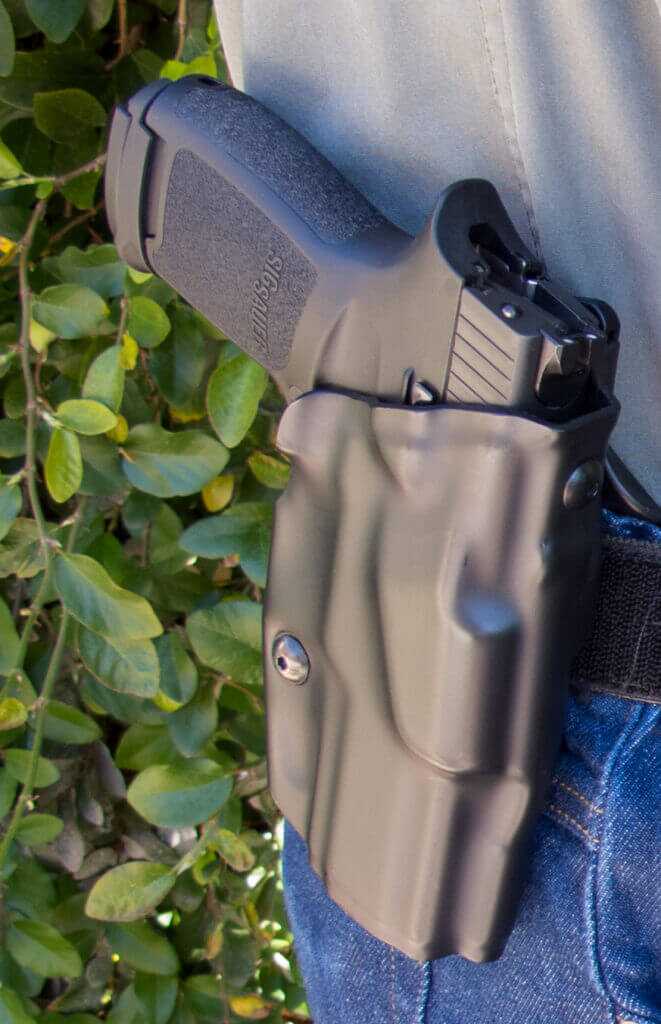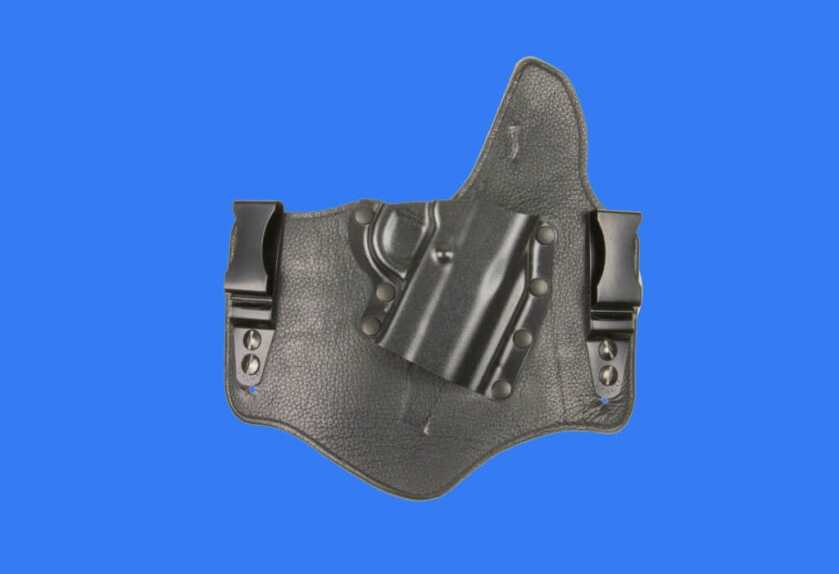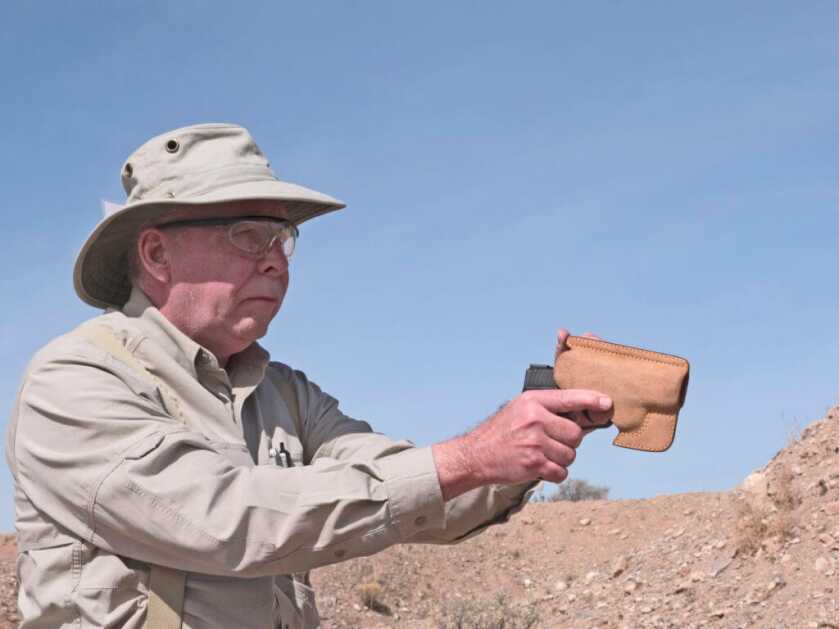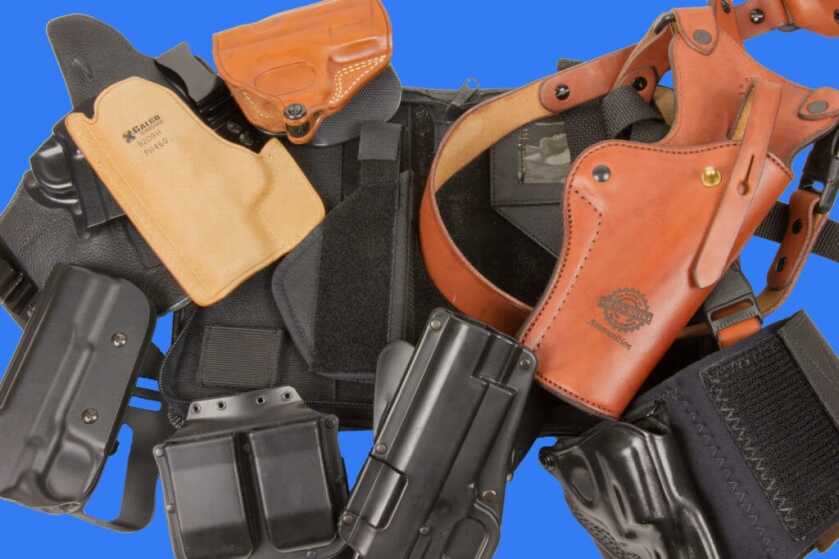THERE IS MORE THAN ONE WAY TO CARRY A GUN DISCREETLY
Many people who have never owned a gun before are arriving at gun stores with the idea of buying their first gun and then carrying it discreetly for self-defense. Some have given considerable thought to how they are going to carry the gun, but some have not. Once it dawns on anyone who plans to carry discreetly that they need to figure out a way to carry the gun, the questions start. The obvious one is: How to carry it?

That’s actually a very good question. And in what manner the gun is to be carried often depends on the person’s lifestyle, where he/she frequents, and the type of gun selected. So, the upshot of this is that the person carrying, and only that person, can decide where and how to carry a gun. There is no single right way to do it, although as with most things gun-related, some people think that the way they do it is the only right way.
Probably the first place to start in making the decision of how to carry the gun is to consider the environment in which you will carry. What are the risks if someone notices that you are carrying? Generally, gun carriers worry needlessly that someone is going to see that they are carrying. While it does happen, most people are not looking that closely at you and even if they do see a bulge under your clothing, they most likely will not know what it is unless the gun is clearly outlined. Don’t disregard the possibility of the gun being detected, but it’s not something the average person needs to stress over.

In some jurisdictions though, letting someone see a concealed gun can land you in jail. And in some jobs, carrying a gun could get you fired. So consider these things and, if you are going to carry, then decide how you are going to carry. And remember that usually the deeper the concealment, the more difficult and time consuming it is going to be to draw the gun. But everything in life is a trade-off, so consider the factors and make your decision.
The method of carry must keep the gun in position so it is where it is expected to be, in the right orientation, when needed in a hurry. You don’t want to be fumbling around trying to find the gun or the grip. And you need to be able to draw without looking at the gun or the holster. This requires practice and training. Consider that you don’t want the holster to shift around if you are running or you get pushed to the ground.
Some people, especially women, consider carrying the gun off the body. Usually, for a woman, that is in a purse. People can also carry off body in containers that look like a briefcase, notebook, or something else. But be aware that if you carry off body, then you might not always be in control of your gun. The container or purse may be set down or be snatched away from you. If you need the gun instantly and it is not in your hand or connected to your body, you may not be able to draw it in time.
And the container should secure the holster with the gun in it in place so it is where you think it will be if you have to reach inside to get it. That’s right. Even a gun inside of a case should be inside a holster.

Another option that used to be popular – and is still in use but not as commonly anymore – is a waist pack or “fanny” pack. Whether or not you want to try that option is up to you, but many do not consider it because they think it makes them look weird. A “fanny” pack can be an effective method of carry though.
While it is obvious that it must be possible to draw the gun rapidly from wherever it is carried, many people overlook the necessity of being able to holster the gun. A good holster will keep an open mouth or top after the gun is drawn so that the gun can be returned with one hand. Of course one hand holstering may be impractical with some carry methods like pocket carry.

Do not point the muzzle at any part of your body when holstering. Many unintentional discharges (UDs) occur during the holstering process, so keep the muzzle pointed in a safe direction. UDs are another reason that a holster that collapses and requires two hands to holster should be avoided. The lip of a worn holster that is folded in can easily get caught on the trigger and cause a UD.
But if a carry method requires two hand holstering, like pocket carry, there are ways to holster that avoid pointing the gun at the other hand. You need training from a good school like Gunsite or a qualified instructor to learn these things. You can’t learn them by reading or watching a video.
Drawing a gun quickly and safely also requires training and practice because it is more difficult to do than it looks. I’ve had instructors like Steve Hendricks of Gunsite who actually study the motion of drawing and have improved my speed and technique by observing and suggesting I do simple things that I never thought of myself. And don’t try to speed holster. That can increase the risk of a UD. There are no holstering speed contests that I know of, so do it slowly and deliberately while continuing to watch for threats.
And when practicing, make very, very sure that the gun is unloaded, or use a dummy practice gun. Start slowly, build technique, and only then increase speed. When you are comfortable with all the movements, speed will naturally increase.

Many people, especially those new to the art of gunfighting, have never thought about what happens if the gun is drawn and the holster stays with the gun. It’s embarrassing, but it can get you killed in a real-life gunfight. So make sure the holster will stay put when the gun is drawn. Pocket holsters have a tendency to stay on the gun, but proper training includes how to draw so the holster stays in the pocket. Good training also includes techniques for getting the holster off the gun quickly and safely if it sticks to the gun.

Should the discreet carry holster have a locking retention feature to hold the gun in the holster until it is intentionally drawn by the carrier? Maybe, but not necessarily. When a gun is carried openly, people around the carrier may decide they want it. With a good retention holster, it is very difficult to get the gun out unless it is drawn a certain way and the retention mechanism is deliberately released. And usually, the retention mechanism is difficult to release unless it is done by the person wearing the holster and that person knows the “secret” of how to release it.
On the other hand, for discreet carry, if it is done right, it is unlikely that anyone will know the carrier has a gun. And because the gun is out of sight, the cover garment must be moved out of the way or the hand inserted inside the carry garment in order to draw the gun. These conditions make it much less likely that a gun snatch would be successful or even attempted. There is nothing wrong with using a retention holster for discreet carry though.

There are many different ways to carry a gun discreetly, out of sight. Some ways are ankle, appendix, small of the back (SOB), belly band, chest, pocket, shoulder, and waist pack. Their names describe where the gun is carried. Other ways to carry are IWB, outside the waistband (OWB), and crossdraw. There are probably some I forgot to mention and some that apply only to women.
There are also some very good holster manufacturers, both large and small. A smaller one that builds quality gear is Simply Rugged Holsters and another is Desert Gun Leather. One of the larger manufacturers which has been around for many years and sells nationally through dealers and also online is Galco International.
Galco offers holsters for nearly all types of carry and sells a lot of them. So I asked Galco which type of carry was the most popular and the answer was IWB with OWB coming in a close second. Incidentally, if you are going with belt carry, invest in a good gun belt. The cheap one from your local big box store will not distribute the weight well or keep the holster where you put it.

Various materials can be used for nearly all holster types. Some are pretty pricey. Some just look good. And some are pretty tough and look good, too. Materials include Kydex, injection molded polymer, steer hide, cow hide, horse hide, synthetic fabric, alligator, ostrich, stingray, shark, buffalo, snake, and others I never would have thought of, but somebody has.
There are pros and cons to every carry method. For example, SOB places the gun directly over, or very close to, the spine. If the carrier were to fall or be pushed onto his/her back, the gun might injure the spine, and hurt a lot. But SOB may still be the best option for some.
Ankle carry is popular because it sounds cool and some cop shows have used it. It may be a good option if the person does a lot of sitting or driving, but it does require that the carrier somehow get his or her hands to the ankle which might require squatting or kneeling. Then the pant leg must be pulled up out of the way so the gun can be drawn. And there is always the chance that the pant leg will snag.
Shoulder or chest carry have their place – for example when driving where drawing a gun from a pocket or the waist is difficult. But know that drawing from that position often results in the muzzle being pointed at the carrier’s own body or a bystander. And drawing may be slower than other methods. But there are ways to increase speed and reduce muzzle sweep. Again, get training.
Training from a competent instructor, no matter what method of carry, is important. It will improve your speed and safety. And don’t forget that you need to decide how to carry spare ammunition. Most all manufacturers make ammo carriers to compliment holsters and methods of carry.

Lastly, you will probably want to avoid those strong side belt holsters that have a magazine carrier attached. Generally, you will want to use your non-shooting hand to grab the spare magazine and insert it. And that is usually a lot faster and easier to do if the magazine is on the side of the hand that will do the reloading.
These ideas are offered as food for thought. Others will have different ideas. But consider the pros and cons of each carry method and then try them out. It is not unusual to decide, after trying a method for a while, that it is just not right for you. You can always change it. And if you are like most people who carry, you will have a box or two of holsters you have tried but decided you don’t like. It’s just part of the lifestyle.

I like the “belly band” made from material developed for military amputees. Stays put, even with a heavy gun. Cool material for hot climates and you can wear it under a light shirt, with a couple of buttons open for quick access. Another idea I have used is when the wife drags you shopping, a good strong shopping bag with strap handles works for me. Just watch out for the gun sniffing dogs.
Now, my question is, wherein the 2nd Amendment does it allow the government to charge you a fee (tax) to carry a weapon? “the right to bear arms shall not be infringed”. Duh, hello Supreme Court!
I’ve found that the camming effect of my “emergency modular portable food supply “ tends to make my pants go down without the weight of a pistol. For me, especially since I always wear a jacket, it’s a shoulder holster that works. If it’s a suit coat, have it taylored with the holster in place. Go with leather. Nylon cuts right through the lining of a coat.
Finally, never carry a $800 pistol in a $20 holster. Spend the money on quality.
…“emergency modular portable food supply “ … LOL
Hey Paul…..I agree with you on the crossdraw. I worked the street, patrol in Seattle, for almost 48 years and carried a crossdraw S&W Mdl 28 6″ as my duty weapon. It was very secure and as quick as any other style of carry. Don’t let the “haters” ( just kidding ) get you.
Learned new things. Very informative, Thanks for sharing!
You didn’t mention cross-body positioning for the gun. I have a IWB holster, and have often thought I would be more comfortable, and able to draw faster if my gun was on my left side and I drew with my right hand. Different orientation for the holster as the butt of the gun faces forward. Just a thought.
As a “senior” now, it’s highly likely I won’t be wearing pants with a belt – most likely elastic waisted loungers.
My “on the farm” attire is likely to be overalls.
Neither case easily accommodates any of the traditional holster arrangements except the shoulder holster. Badger Tactical (now defunct) made a rig that worked well in either situation – elastic straps similar to chest carry with the holster around waist level with “guitar strap buttons” that held it under the waist band. The cordura model could be disassembled and reassembled as left hand carry.
Best compromise for me is the three-way belly band with right, left & SOB carry positions.
Being an ambidexterous shooter, this also allows multiple weapon carry.
“Your quickest reload is a second weapon.”
I like the part where you say my it is my choice only! Lots of people seem to be snobs and they want it their way only. I have a cross draw and a G23 I seem to be a leper around the gun community…… Well folks nothing works out as planned so get used to breaking from the expected and learn that way. I have read and heard that one should avoid administraive actions, you must stand exactly square with the target, lean forward and stick your ass out, both feet apart exactly shoulder width, and my favorite no cross draws or shoulder holsters when shooting an event…..now wtf you don’t think I can draw my edc and not have it pointing at the target while it is coming out of the holster???? Well closed minded is not learning!!! Sorry I get a bit heated with the snobbery that is out there.